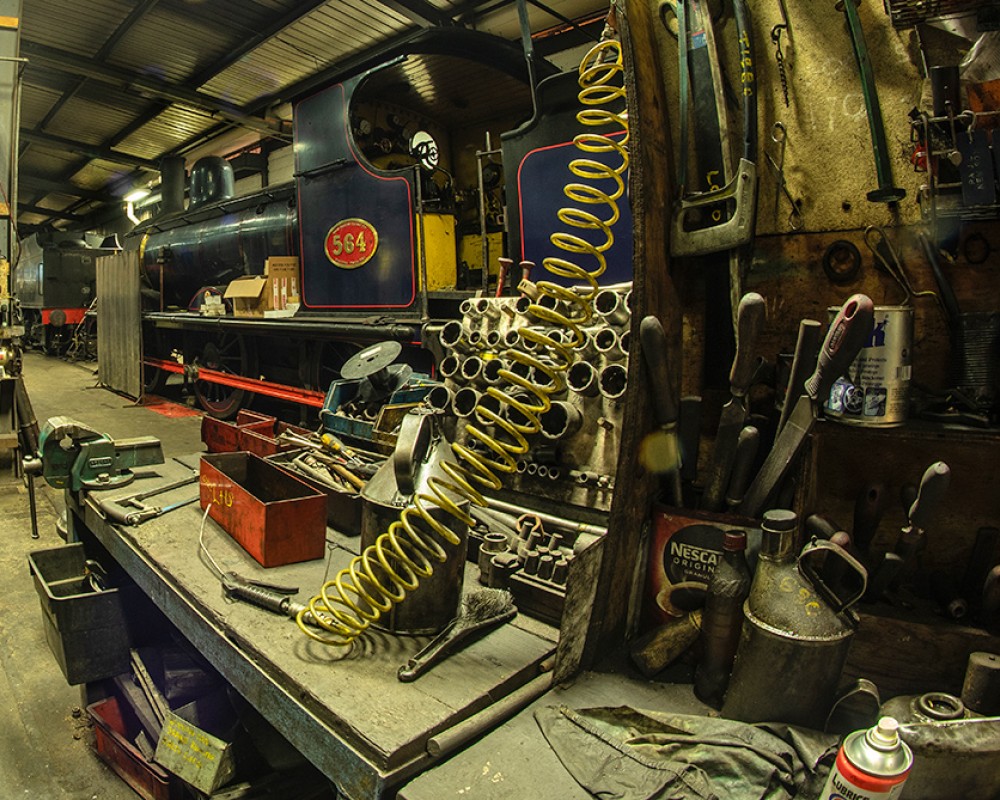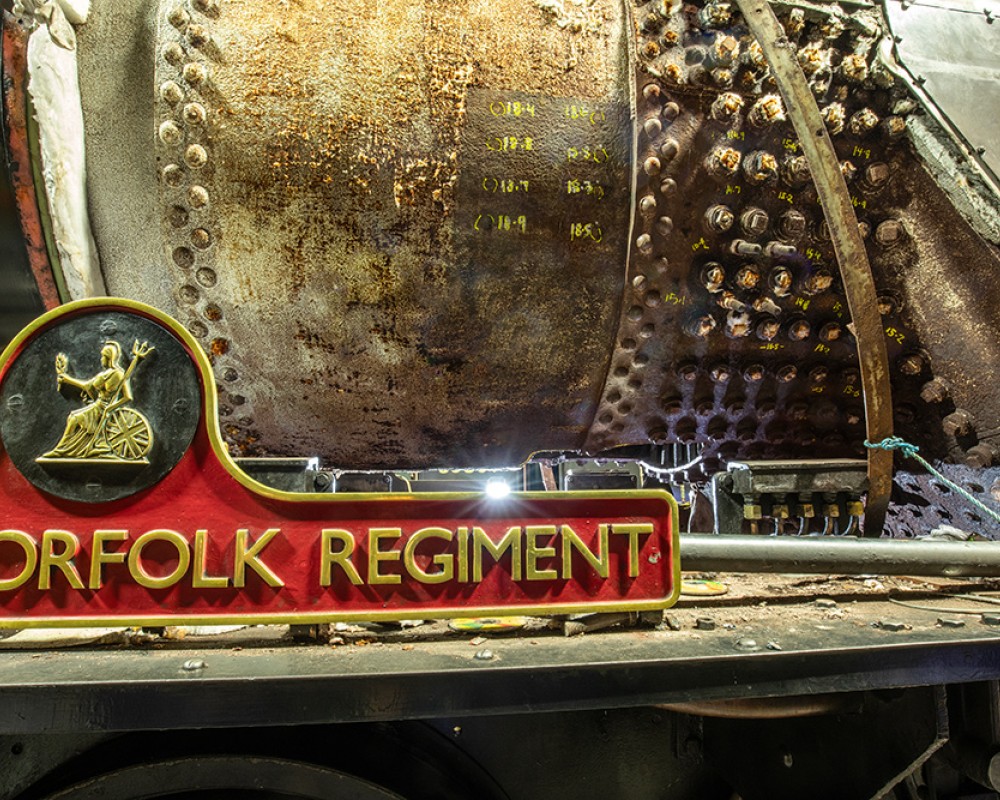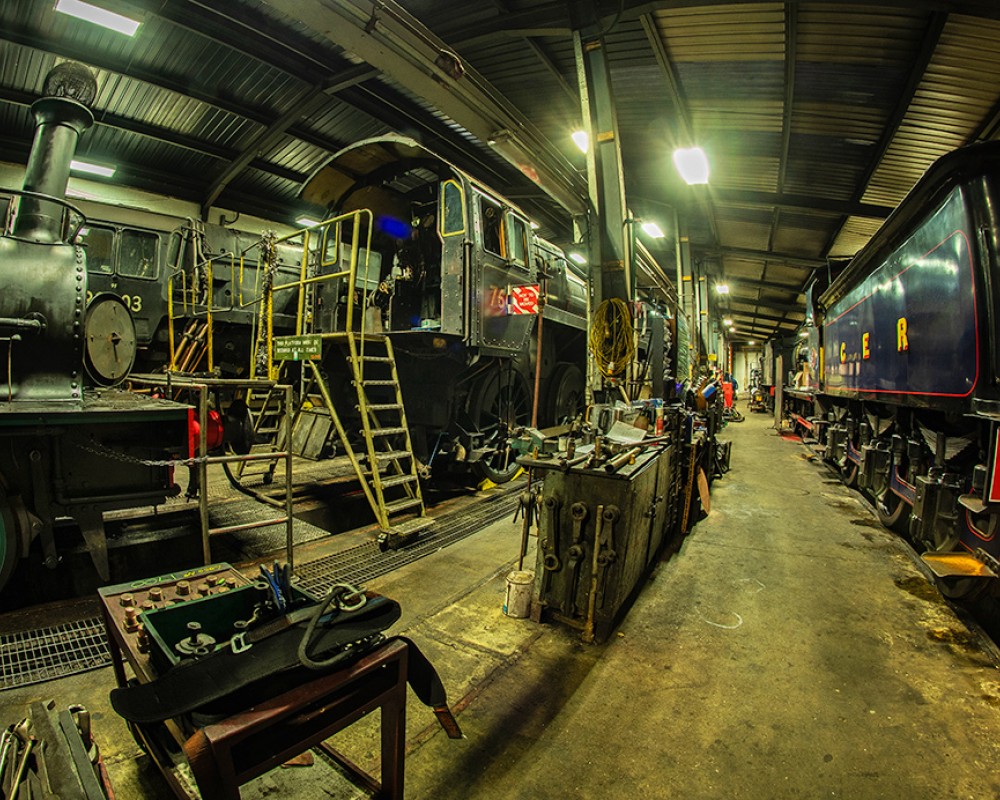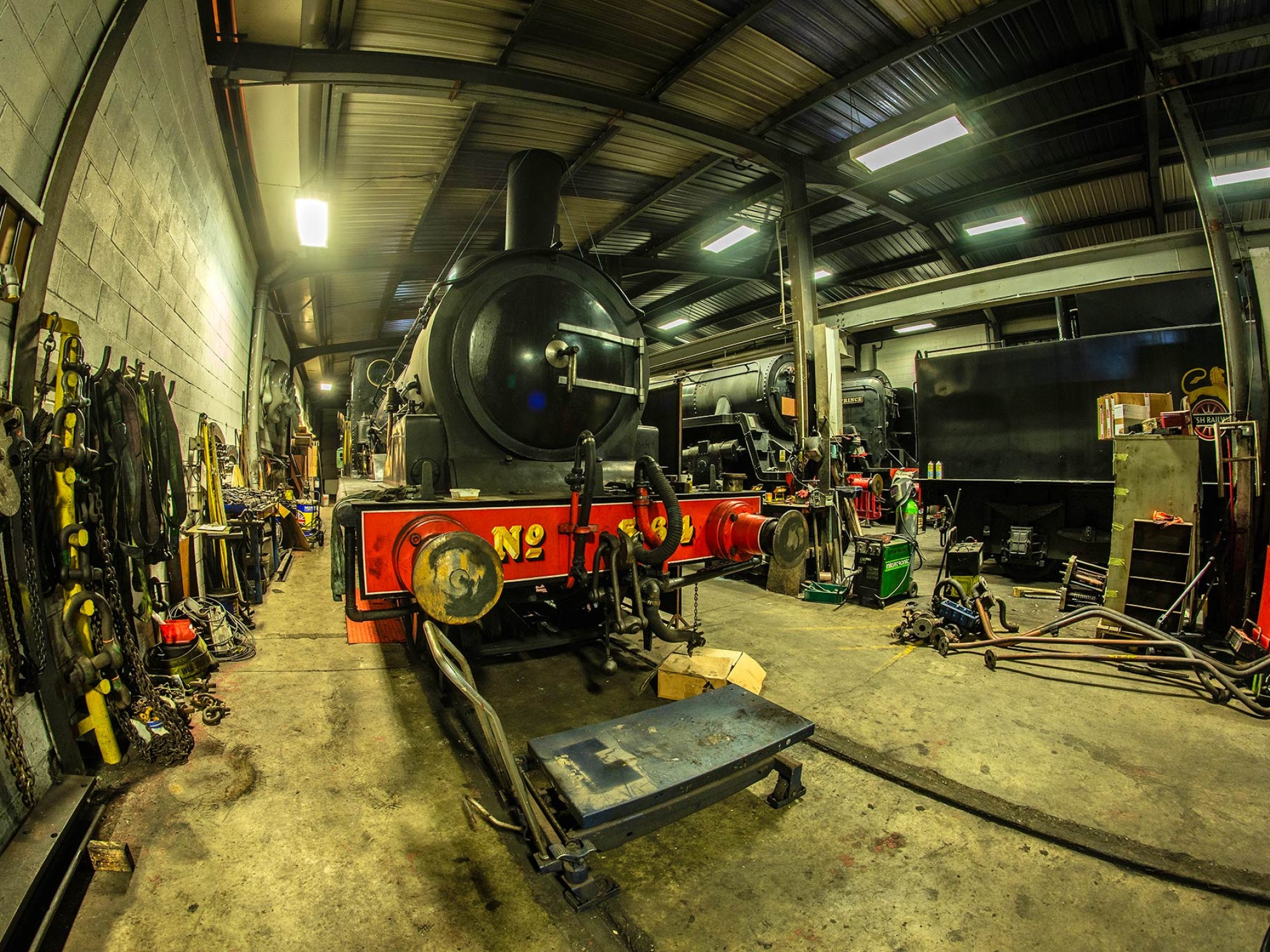
Steaming into the future
Behind the glamour and the glory, a thriving team of enthusiasts work to keep the wheels of the North Norfolk Railway turning
Often voted one of the prettiest railway journeys in the country, the North Norfolk Railway’s Poppy Line runs from the picturesque seaside town of Sheringham to the outskirts of Holt. Families queue for a chance to ride behind one of the magnificent steam locomotives, sitting back in the comfort of the antique carriages and watching the rolling fields float by. The holidaymaker’s day ends with the curling smoke fading from view as they drive away; however, for the staff and volunteers who keep the railway running, the day is far from over.
Throughout the year, a group of highly trained paid engineers and fitters work tirelessly to maintain and repair the engines and rolling stock. They are headed by Chief Mechanical Engineer Keith Ashford, who believes working at the North Norfolk Railway is a privilege as well as a calling. “Many of our staff joined the railway as volunteers; you have to be passionate about the preservation of these locomotives,” he explains. “The workshops here in Weybourne are recognised as centres of excellence in our field and we are now extremely proud to offer boiler washout examination courses for BESTT (Boiler Engineering Skills Training Trust).”
Working with steam is a calling, a tangible link to a past where many men achieved incredible feats of engineering through sheer skill and determination. Steam is the closest humans have ever come to creating life through mechanical means, long before robotics filled the news headlines, steam engines rose from the hands of engineers and rewarded those who cared for them. As soon as a fire is lit within, the engine comes alive, slowly warming to build steam. Under the guiding hand of a skilled driver and fireman she will perform excellently, though those who take risks or push too hard are often met with burns or even an engine who refuses to steam at all!
Thousands of visitors pour onto the platforms each running season, not thinking how the driver has volunteered for years, studying regulations for hours on end, making his way up from a cleaner. Nor the fireman one step behind him. All drivers start as cleaners before progressing to firing duties and finally attaining the coveted accolade of driver, a position reserved for the very best enginemen. A small army of cleaners, guards and platform staff keep the railway running, each giving up their free time to ensure our heritage is shared with future generations.
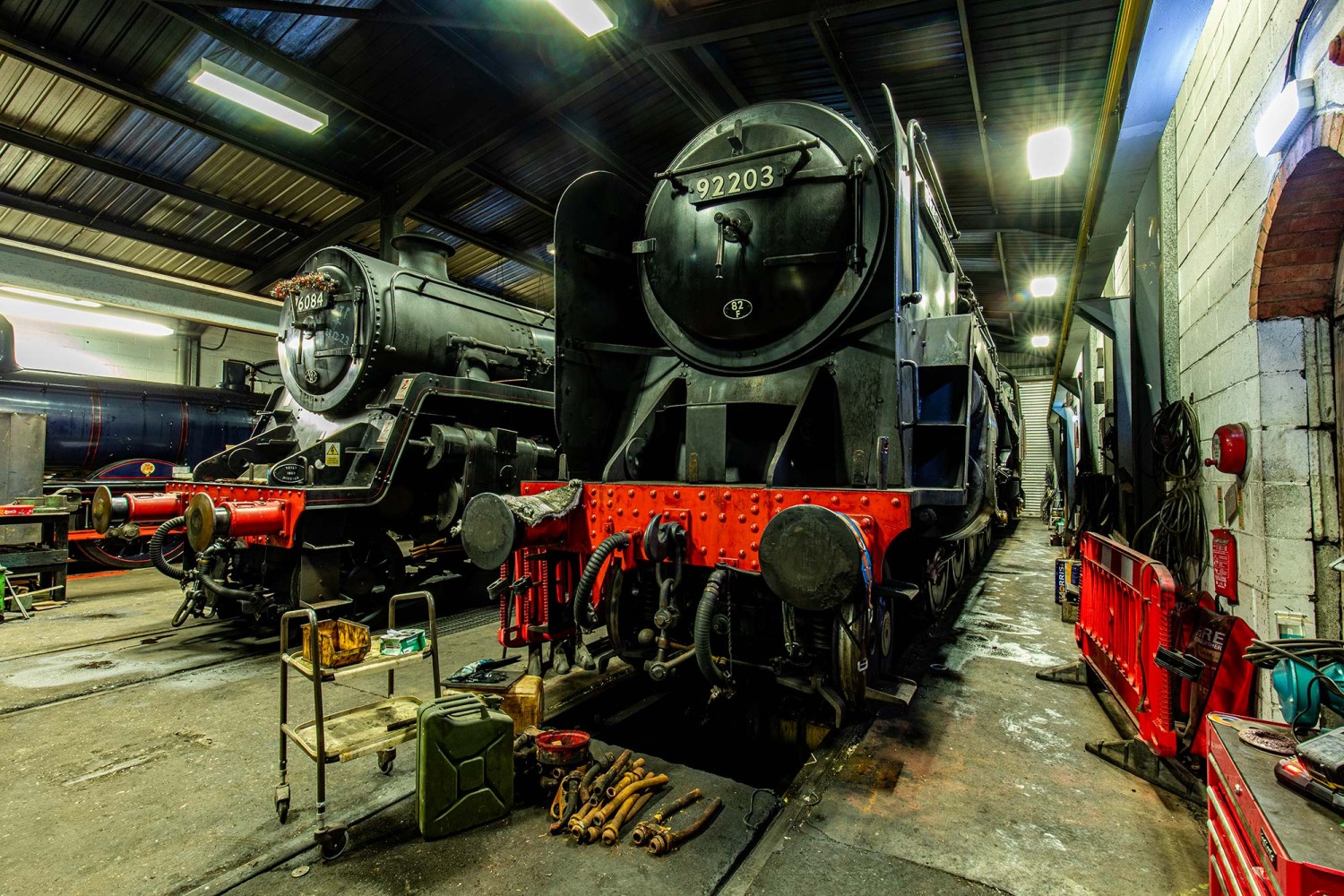
ABOVE: BR 9F class locomotive Black Prince (92203) was bought by the North Norfolk Railway from wildlife artist David Shepherd and is being assessed. Beside is BR Standard 4 (76084) which is awaiting its ten year major overhaul.
Few realise that a heritage railway runs by the same rules as the mainline and is answerable to the ORR (Office of Road and Rail). The same parameters which keep a high-speed electric train on the rails are applicable to heritage lines. Each engine needs to pass an eight-page documented checklist, to be signed off by Keith or Chief Fitter Alan Harper-Bourne. They bear the responsibility of ensuring the engine is safe to run on the rails, and in the event of any accident, it will be their signature under scrutiny. Yet even with immense responsibility on their shoulders, Keith and Alan are both incredibly enthusiastic about the railway and volunteer in their spare time away from their paid hours at work.
“I started as a volunteer around 10 years ago, having been interested in steam railways since childhood,” says Alan. “I was approached for the job of fitter in 2018 and I’d become the Running Shed Foreman by 2021. My love for steam stemmed from my father and grandfather, who took me all over the country to visit nearly every preserved railway there is!”
A skilled man, Alan had worked in engineering all his professional life and made parts for the railway in a commercial capacity for years. “As well as working in the engineering shops at Weybourne, I also volunteer as a fireman on the engines themselves. I live and breathe steam; my wife is incredulous when I get home from work and pick up a railway magazine. Steam is in my blood, and nothing compares to the unique pride of seeing an engine brought back onto the rails through your own dedication.”
Working at the North Norfolk Railway is much more than a 9-5 job; both Keith and Alan agree you need to have an innate passion for steam. We are just custodians of these magnificent engines as they will outlive us all in the end.
The railway also serves as an educational platform, encouraging the engineers, drivers and firemen of the future. Working with two local colleges, they are hoping to support one lucky apprentice this September as the last apprenticeship placement was a resounding success. For those eager to peek behind the scenes, shed tours are available by prior arrangement and with a small donation to the railway.
Heritage railways play an important role in preserving our past as well as supporting the budding engineers of the future, but they can only continue to do so with members of the public choosing to support them. Visit for a ride when you next get the chance. Go to nnrailway.co.uk for a full list of events, galas and running days.
